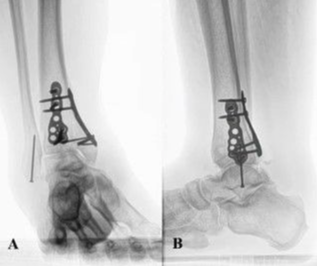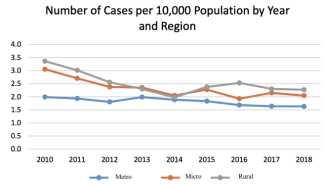Firecracker Powder: A Unique Source of Burn Injuries
© 2023 HMP Global. All Rights Reserved.
Any views and opinions expressed are those of the author(s) and/or participants and do not necessarily reflect the views, policy, or position of ePlasty or HMP Global, their employees, and affiliates.
Abstract
Firecrackers are a common cause of burns in India; large-scale use of firecrackers is seen during the festival of Diwali, and patients of all age groups present with varying patterns of firecracker burns. With the recent ban of firecrackers in some parts of the country, we have noticed a new emerging cause of burns during Diwali where patients were attempting to prepare firecrackers at home using Gandhak (sulfur) and potash by mixing the materials in a pipe gun. Explosion of this powder leads to varying degree of burns, and this series reports 12 such cases who presented to a tertiary care burn unit in North India during the 2022 festival of Diwali.
Introduction
Firecrackers are a common cause of burns in India specially during festivals, weddings, events and various other celebrations. Large-scale use of firecrackers is seen during the festival of Diwali, and patients of all age groups present with varying patterns of firecracker burns. With the recent ban of firecrackers in some parts of the country, we have noticed a new emerging pattern of burns during Diwali. Since the crackers are not easily available, people are attempting to prepare firecrackers at home using Gandhak (sulfur) and potash, mixing the materials in a pipe gun. In this article, we describe the cases of burns due to accidental explosion of firecracker powder seen in patients managed by our burn unit at a tertiary care center during the 2022 festival of Diwali.
Materials and Methods
This series includes all firecracker powder–related burn cases admitted at our burn center during a period of 7 days around the festival of Diwali. Patients were managed as per standard protocol of the burn unit for thermal burns with fluid resuscitation, analgesics, and regular dressing changes. Surgical intervention was done, if indicated, after resuscitation.

Case Series
Case 1
A 13-year-old boy was playing in streets, collected firecracker powder, and mixed it inside a mixer grinder at home, which led to a blast. He sustained facial burns along with a blast injury to the right hand with fracture of the right thumb metacarpal (Figure 1). A fasciotomy was done on the right forearm and hand, but the thumb was eventually amputated at the level of the carpometacarpal joint. Debridement and skin grafting of the forearm was performed. Facial burns healed with conservative management. He was also found to have ocular foreign bodies containing firecracker powder, which were removed under general anesthesia by the ophthalmology team.

Case 2
A 35-year-old man sustained burns due to explosion of firecracker powder when he was mixing and beating the powder to prepare firecrackers. The patient sustained burns over 10% of his body, including facial burns (Figure 2). The burns were initially managed conservatively with irrigation of the facial wound with saline, cleaning of gunpowder particles, and regular dressing changes. The patient developed a soft tissue defect on the right cheek, which was then covered with a split-thickness skin graft.

Case 3
A 17-year-old male adolescent presented to our clinic after sustaining burns while mixing and beating firecracker powder. The patient suffered thermal burns over 40% of his body along with blast injury of both hands (Figure 3). He ultimately needed left below elbow amputation and right-hand disarticulation at the level of wrist joint. His facial burns and ocular burns were managed conservatively.

Results
A total of 12 patients with firecracker powder burn injuries presented to our burn unit during the 2022 festival of Diwali. Demographic details for these patients are shown in Table 1. All of them fell under the criteria for admission, either due to percentage of burns or because of associated hand injuries.

The most common site injured was the upper limb (n = 12) followed by the face (n = 8) (Table 2). Inhalational injury was seen in 5 patients. One patient had permanent vision loss due to ocular injury, and another patient had a corneal ulcer. Three patients underwent surgical intervention. One patient needed groin flap coverage for his hand injuries, and 2 patients underwent limb amputations.
Discussion
Firecracker-related injuries are commonly seen in India during festivities and celebrations. The number of cases reported increases during the festival of Diwali, which is the festival of light. Celebrations during Diwali include use of various types of firecrackers, which is one of the major causes of burn injuries sustained during that season. Puri et al conducted a study from 1998 to 2006 and reported 157 cases related to firecrackers.1 Tandon et al reported 1373 patients with firecrackers injuries sustained during Diwali from 2002 to 2010.2 These firecracker injuries included burns, soft tissue injuries, and bony injuries.
Apart from burns caused due to the lighting of firecrackers, gunpowder explosions are another source of burn injuries. Chief ingredients of the powder used for preparing firecrackers are sulfur, nitrates, chlorates, aluminum, and charcoal. Owing to the chemical reaction, a great deal of sulfur dioxide, nitrogen oxides, carbon monoxide, and carbon dioxide develops in the atmosphere following the gunpowder explosion. The injury caused by these explosions is almost always a compound injury.4
Burns from gunpowder explosions were reported by Navarro-Monzonis et al, who described 123 patients who sustained burns over a period of 7 years. These patients were teenagers who were involved in accidents in the street, but other reports have shown the most serious burns have followed work-related accidents.3 In a 13-year retrospective study, Xu-Lin Chen et al discussed burns due to gunpowder explosions in a fireworks factory in which 339 patients were injured.4 Most of these gunpowder explosion injuries reported to date have occurred in places where firecrackers are manufactured. A few cases have also been reported when chemicals were combined to create an indigenous gun for scaring away animals. Jadav et al reported 2 such incidents in 2022 where 3 victims were injured during the mixing of Gandhak (sulfur) and potash in an improvised pipe gun to scare away animals on a farm.5 Giri et al reported an autopsy case of a fatality caused by an unintentional blast while combining chemicals for an improvised animal scaring gun in which the victim utilized the same chemical mixture as was used in the incidents reported by Jadav et al.6
With the recent ban on firecrackers in some parts of the country, a new pattern of burn injuries has emerged due to indigenous attempts at manufacturing firecrackers in the home setting. People collect various components of the firecracker powder, and in an attempt to make the firecracker, mix and beat the powder in such a manner that frequently leads to an explosion. These kind of injuries during Diwali season have not been reported to date to the best of our knowledge. Our patients used chemicals such as Gandhak (sulfur) and potash to make firecrackers at home. Sulfur and potash are two chemicals that are utilized as fertilizers in agriculture and are readily available in the markets at incredibly inexpensive prices.
We observed that these types of injuries were more severe than the other firecracker burns reported until now. In the study of firecracker injuries by Tandon et al, most patients (52.58%) had burns involving 1% of the body surface area, and only 2.84% patients had burns exceeding 10% of the body surface area.2 In comparison, explosion of firecracker powder as seen in our patients not only results in extensive thermal burns but also causes major soft tissue and bony injury of upper limbs. We received patients with thermal burns over as much as 40% of their body as a result of explosion of this firecracker powder.
Treatment of these burns is similar to that of thermal burns but requires multidisciplinary management because of frequent involvement of other systems. Ocular injuries are commonly observed that require ophthalmologic consultation. Keratitis and conjunctivitis from powder particles are usually mild and self-limiting, but one of our patients developed corneal ulceration, and another patient had complete vision loss in 1 eye. These ocular injuries occurred due to the direct injury to the eyes at the time of explosion of the powder. Otolaryngological consultation may be needed for cases with injury of the tympanic membrane. Extremities are often affected, and surgical intervention may be required for provision of soft tissue cover; in some cases, the injury can be severe enough to warrant an amputation. Due to such multisystem involvement, burns from explosion of firecracker powder leads to a more critical presentation and a prolonged hospital stay compared with that usually seen in firecracker injuries.
Conclusions
Firecracker injuries have been common during the period of Diwali for many years, but this unique pattern of injury due to explosion of firecracker powder has only been observed recently. The clinical presentation in such cases is usually critical with presence of major thermal burns associated with ocular and limb injuries. As a result of our research, we believe that stricter laws are required for reducing the number of burns during this period because, despite the ban on firecrackers, newer indigenous methods are being devised for their preparation. Increasing public awareness and regulating the availability of the ingredients can help in reducing the number of such injuries in the future.
Acknowledgments
Affiliation: 1Department of Burns, Plastic and Maxillofacial Surgery, Vardhman Mahvir Medical College and Safdarjung Hospital, New Delhi, India
Correspondence: Chisel Bhatia, MBBS, MS; chiselbhatia@gmail.com
Ethics: Patients provided written consent for the use of images.
Disclosures: The authors disclose no financial or other conflicts of interest.
References
1. Puri V, Mahendru S, Rana R, Deshpande M. Firework injuries: a ten-year study. J Plast Reconstr Aesthet Surg. 2009 Sep;62(9):1103-1111. doi:10.1016/j.bjps.2007.12.080
2. Tandon R, Agrawal K, Narayan RP, Tiwari VK, Prakash V, Kumar S, Sharma S. Firecracker injuries during Diwali festival: the epidemiology and impact of legislation in Delhi. Indian J Plast Surg. 2012;45:97-101. doi:10.4103/0970-0358.96595
3. Navarro-Monzonis A, Benito-Ruiz J, Baena-Montilla P, Mena-Yago A, de la Cruz-Ferrer LI. Gunpowder-related burns. Burns. 1992 Apr;18(2):159-161. doi:10.1016/0305-4179(92)90018-p
4. Chen XL, Wang YJ, Wang CR, Hu DL, Sun YX, Li SS. Burns due to gunpowder explosions in fireworks factory: a 13-year retrospective study. Burns. 2002 May;28(3):245-249. doi:10.1016/s0305-4179(01)00122-x
5. Jadav D, Bhowmik S, Saraf A, et al. (July 06, 2022) Accidental blast injuries while making indigenous explosive chemical mixture: a report of two incidents. Cureus 2022 Jul;14(7):e26609. doi:10.7759/cureus.26609
6. Giri SK, Sharma L, Kumar V, Dhattarwal S, Keshwani P. Accidental blast of an improvised bird scarer gun: a case report. Int J Curr Adv Res. 2018, 28:9212-9214.
















